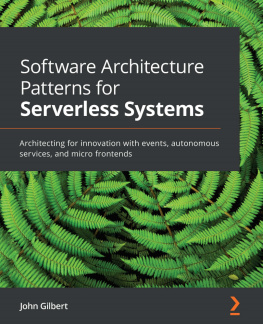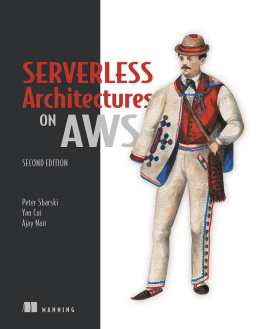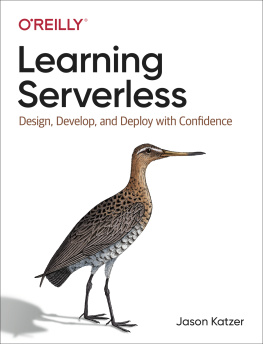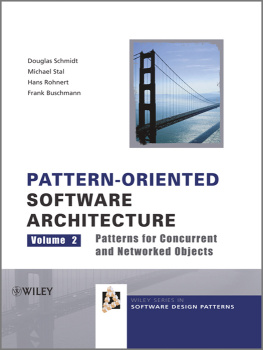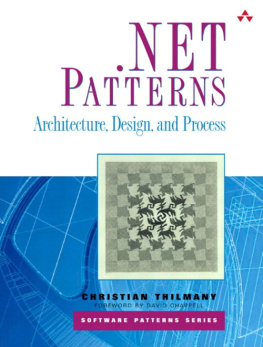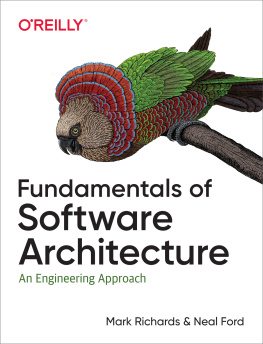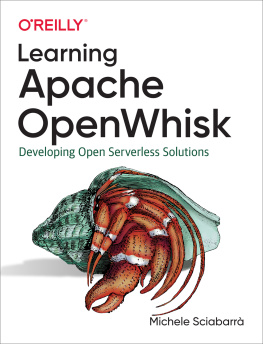John Gilbert - Software Architecture Patterns for Serverless Systems
Here you can read online John Gilbert - Software Architecture Patterns for Serverless Systems full text of the book (entire story) in english for free. Download pdf and epub, get meaning, cover and reviews about this ebook. year: 2021, publisher: Packt Publishing, genre: Computer. Description of the work, (preface) as well as reviews are available. Best literature library LitArk.com created for fans of good reading and offers a wide selection of genres:
Romance novel
Science fiction
Adventure
Detective
Science
History
Home and family
Prose
Art
Politics
Computer
Non-fiction
Religion
Business
Children
Humor
Choose a favorite category and find really read worthwhile books. Enjoy immersion in the world of imagination, feel the emotions of the characters or learn something new for yourself, make an fascinating discovery.
- Book:Software Architecture Patterns for Serverless Systems
- Author:
- Publisher:Packt Publishing
- Genre:
- Year:2021
- Rating:5 / 5
- Favourites:Add to favourites
- Your mark:
- 100
- 1
- 2
- 3
- 4
- 5
Software Architecture Patterns for Serverless Systems: summary, description and annotation
We offer to read an annotation, description, summary or preface (depends on what the author of the book "Software Architecture Patterns for Serverless Systems" wrote himself). If you haven't found the necessary information about the book — write in the comments, we will try to find it.
John Gilbert: author's other books
Who wrote Software Architecture Patterns for Serverless Systems? Find out the surname, the name of the author of the book and a list of all author's works by series.
Software Architecture Patterns for Serverless Systems — read online for free the complete book (whole text) full work
Below is the text of the book, divided by pages. System saving the place of the last page read, allows you to conveniently read the book "Software Architecture Patterns for Serverless Systems" online for free, without having to search again every time where you left off. Put a bookmark, and you can go to the page where you finished reading at any time.
Font size:
Interval:
Bookmark:

Architecting for innovation with events, autonomous services, and micro frontends
John Gilbert
BIRMINGHAMMUMBAI
Copyright 2021 Packt Publishing
All rights reserved. No part of this book may be reproduced, stored in a retrieval system, or transmitted in any form or by any means, without the prior written permission of the publisher, except in the case of brief quotations embedded in critical articles or reviews.
Every effort has been made in the preparation of this book to ensure the accuracy of the information presented. However, the information contained in this book is sold without warranty, either express or implied. Neither the author, nor Packt Publishing or its dealers and distributors, will be held liable for any damages caused or alleged to have been caused directly or indirectly by this book.
Packt Publishing has endeavored to provide trademark information about all of the companies and products mentioned in this book by the appropriate use of capitals. However, Packt Publishing cannot guarantee the accuracy of this information.
Group Product Manager: Aaron Lazar
Publishing Product Manager: Richa Tripathi
Senior Editor: Nitee Shetty
Content Development Editor: Tiksha Lad
Technical Editor: Gaurav Gala
Copy Editor: Safis Editing
Project Coordinator: Deeksha Thakkar
Proofreader: Safis Editing
Indexer: Pratik Shirodkar
Production Designer: Aparna Bhagat
First published: June 2021
Production reference: 1290621
Published by Packt Publishing Ltd.
Livery Place
35 Livery Street
Birmingham
B3 2PB, UK.
ISBN 978-1-80020-703-5
www.packt.com
To my wife, Sarah, and our children, for their endless love and support on this journey.
John Gilbert
John Gilbert is a CTO with over 30 years of experience in architecting and delivering software systems across many industries. His cloud journey has spanned all the levels of cloud maturity, from lift and shift and software-defined infrastructure to microservices and continuous deployment. He was an early serverless adopter and put his first serverless workloads into production just months after AWS Lambda's introduction. He has also authored Cloud Native Development Patterns and Best Practices and JavaScript Cloud Native Development Cookbook. He finds delivering serverless solutions to be, by far, the most fun and satisfying, as they force us to rewire how we reason about systems and enable us to accomplish far more with much less effort and risk.
Kamesh Ganesan is a cloud evangelist, seasoned technology professional, author, speaker, and coach with over 24 years of IT experience in all major cloud technologies, including AWS, Azure, GCP, Oracle, and Alibaba Cloud. He has over 50 IT certifications, including 5 AWS certifications, 3 Azure certifications, 3 GCP certifications, 6 OCI certifications, and an Alibaba Cloud certification. He has played many roles, including certified multi-cloud architect, cloud security architect, cloud-native application architect, lead database administrator, programmer analyst, and developer. He has architected, built, automated, and delivered high-quality, mission-critical, and innovative technology solutions that have helped his enterprise, commercial, and government clients to be very successful and have significantly improved their business value using multi-cloud strategies.
Greg Leonardo is currently a cloud architect helping organizations with cloud adoption and innovation. He has worked in the IT industry since his time in the military. He is a veteran, father, architect, teacher, speaker, and early adopter. Currently, he is a Certified Azure Solution Architect Expert, Microsoft Certified Trainer (MCT), and Microsoft Azure MVP, and he has worked in many facets of IT throughout his career. Additionally, he is president of TampaDev, a community meetup that runs #TampaCC, Azure User Group, Azure Medics, and various technology events throughout Tampa.
He has also authored Hands-On Cloud Solutions with Azure and the previous two editions of Azure Strategy and Implementation Guide for Microsoft by Packt Publishing.
Lalit Rawat is an Azure MVP and MCT and is currently working as a solution architect. He is the author of AZ-104 Azure Administrator and Azure Interview Q & A. He likes to share his knowledge through his blog and manage and share his technical skills in AzureTalk Community, BITPro, and Azure User Meetup groups. He has written a number of articles on Microsoft Azure. He is a speaker and has delivered sessions at the MS Global bootcamp and other events. He has delivered more than 500 training sessions to professionals worldwide in Microsoft Azure and other technologies, including SCOM and Windows Server. In addition, he provides instructor-led online training and hands-on workshops. His technical prowess and ability to explore new frontiers of technology and impart them to his aspiring team members are his trademark.
Sivaraj Ambat is a cloud expert and software professional specializing in application development for the web, desktop, mobile apps, chatbots, and AI-based applications. He has over 25 years of industry experience in diverse roles and companies, ranging from instrumentation and industrial robotics to embedded systems and software application development. He is a recipient of the US-based Training Magazine's 2016 Top 20 Emerging Training Leaders Award and has also been a winner at many hackathons and quiz competitions. He currently works at Tech Mahindra, Bangalore, as a principal consultant and senior fellow. He can be reached at @sivarajTweets on Twitter.
Font size:
Interval:
Bookmark:
Similar books «Software Architecture Patterns for Serverless Systems»
Look at similar books to Software Architecture Patterns for Serverless Systems. We have selected literature similar in name and meaning in the hope of providing readers with more options to find new, interesting, not yet read works.
Discussion, reviews of the book Software Architecture Patterns for Serverless Systems and just readers' own opinions. Leave your comments, write what you think about the work, its meaning or the main characters. Specify what exactly you liked and what you didn't like, and why you think so.

